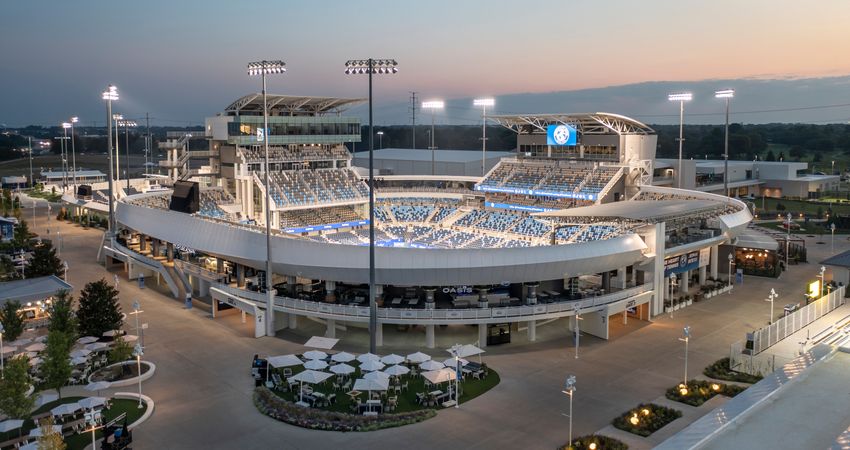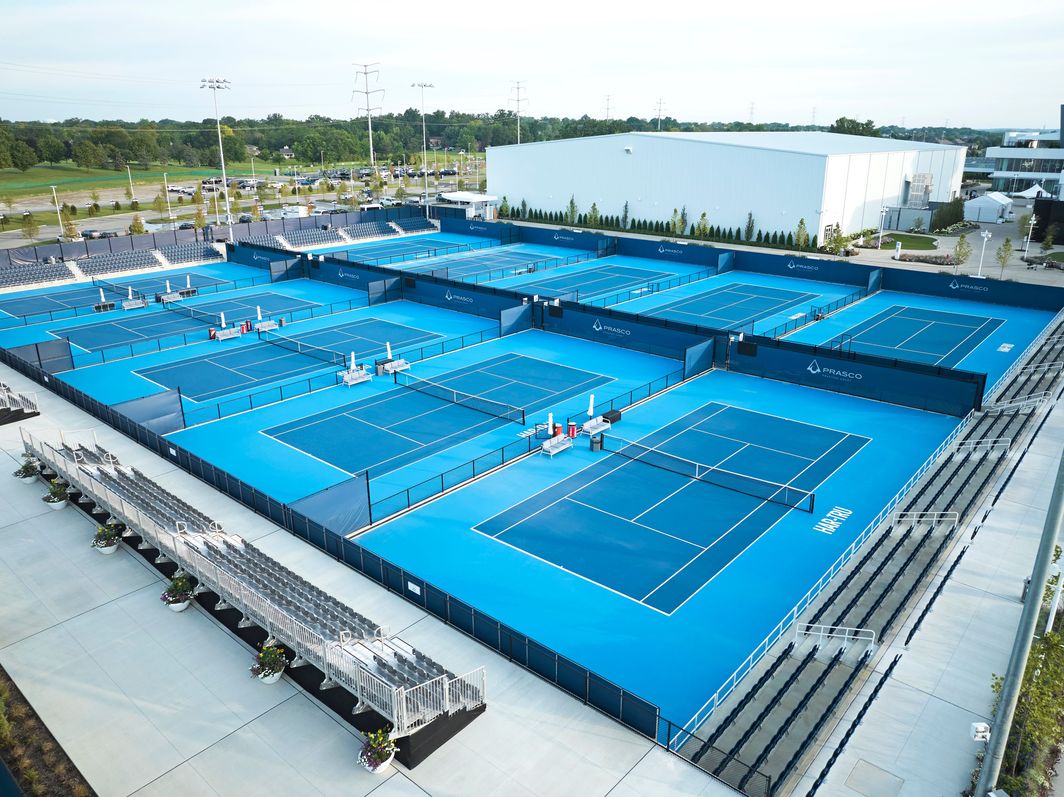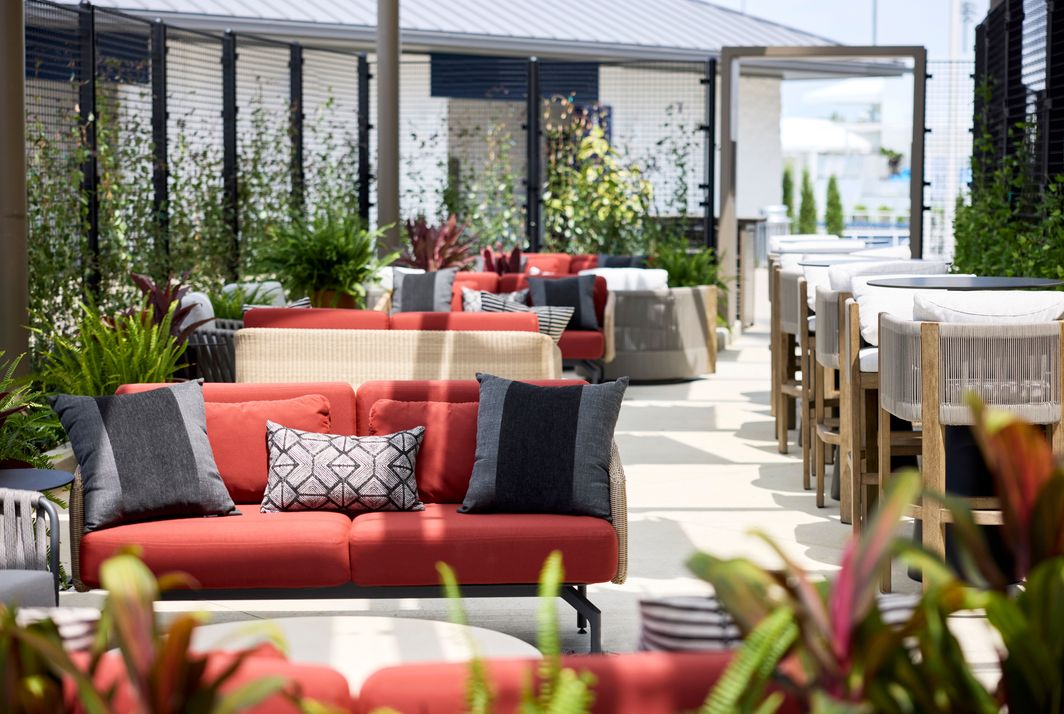Everything you need to know about the new and improved Cincinnati Open

CINCINNATI -- One week after the 2024 Cincinnati Open ended, the work began. With just 11 months to prepare, the 126-year-old tournament faced a massive challenge: expand both singles draws from 56 to 96 players, accommodate dozens of additional teams and overhaul a site that had long been stretched for space.
The task seemed daunting. The Lindner Family Tennis Center needed more courts, larger locker rooms, expanded fitness areas and dining spaces capable of handling thousands more meals each day. Finding the room for all of it -- a persistent issue in the past -- became the first priority.
For Beemok Capital, which acquired the combined WTA/ATP 1000 tournament in 2022, there was never a question of whether the renovation would happen. Tennis was returning on Aug. 5, 2025, and the deadline left no room for error.
Over 328 days -- complicated further by an especially rainy season in the Queen City -- the transformation took shape. By the time the project was complete, the Cincinnati Open had not only expanded to meet its new demands, but had remade itself into one of the premier venues on the Hologic WTA Tour.
The $260 million renovation was methodical, with an incredible amount of attention to detail. In addition to improved amenities for players, it placed an emphasis on accessibility for fans, aesthetic beauty and spaciousness on the grounds. For anyone returning to the event, the changes will be immediately obvious:
• Grounds expansion: The Lindner Family Tennis Center now spans more than 40 acres, doubling in size compared to 2024.
• Player clubhouse: A state-of-the-art clubhouse designed exclusively for players.
• Fan pavilion: A 16,000-square-foot pavilion where fans can take a break from the sun and enjoy sponsor activations.
• Dining enhancements: A 1,400-seat dining area featuring 13 restaurants.
• Premium garden suites: Ultra-luxury garden suites with world-class amenities and menus curated by celebrity chef Jet Tila.
• Family-friendly spaces: Two new fan lawns designed for family activities throughout the day and evening.
More Courts, More Seats and Greater Access
There are 31 courts now, up from 17 in 2023, and fans will certainly be clamoring to watch the action from the brand-new Champions Court, an intimate 2,300-seat sunken stadium located just inside the new south entrance. Additional seating was also added in the upper tier of the Grandstand -- replacing the bleachers -- and around the Prasco practice courts.
Accessibility has long been a hallmark of this tournament, and the strategic location of the courts and seats will provide even more opportunities for fans to get an up close and personal look at their favorite players.
“It’s not just about the number of courts we added,” said Cincinnati Open Chief Operating Officer Jansen Dell, who oversaw the entire project. “It’s about how we added them. On the south side, sinking the 10 courts into the ground by five feet allows for 360 views of those courts. We also put permanent tip-up seating on those, so 1,400 fans can have permanent seats. We added a lot of temporary seating around practice courts. We made practice a priority, and the same video boards that show up on match courts also show up on practice courts.”
Fans will also have the Grand Slam-like opportunity to watch player interviews in Tennis Channel’s new broadcast studio.
Goodbye Asphalt, Hello Greenspaces
Another of the renovation team’s top priorities was softening the grounds and adding more color and natural beauty. The vision was a park-like feel that was more colorful and more welcoming, befitting of a late-summer tournament under a bright sun and oozing positive vibes. The exceptional landscaping and added greenery are noticeable and rather extraordinary. The grounds now feature 42,670 locally grown annuals -- covering an area of 43,650 square feet of greenhouse space, or 3.3 acres -- 13,712 perennials and grasses, 1,293 deciduous and evergreen trees and 950 shrubs.
“I think we were pretty successful in accomplishing our goal of, ‘What would tennis look like in a park?’” Dell says. “Anywhere that we could have landscaping, we had landscaping, and that adds to that softening feel.”
What also adds to the softening feel is the removal of asphalt, which has been replaced by concrete walkways and natural and synthetic lawn areas. Not only does it look nicer, but there are sensory benefits: slightly cooler temperatures, more brightness and no more unpleasant tar smell. Dell’s team also softened the facades of Center Court and the Grandstand with metal cladding to give them a sleeker, more modern look. And in keeping with the colorful theme, the courts also got a makeover, with Har-Tru surfaces that are a striking two-tone blue.
By the Numbers: A New and Improved (and Heavily Reconstructed) Cincinnati Open
Here are some more numbers that are emblematic of just how massive this project was, and how much more interactive the experience will be for fans.
• There are 101 individual videoboard displays all across the grounds, covering 9,127 square feet. These videoboards will have everything from live match coverage to stats to schedules.
“No matter where you are -- whether you stop for lunch, whether you’re interacting with sponsors, whether you’re walking the site -- there’s always a way to engage with the tennis without having to sit at a court,” Dell says. “And with the new pavilion, we’ll be able to break that board into multiple uses.
“If there’s a great match on Center Court, we can take over the entire board. But most likely, you’ll be sitting there watching it like [NFL] RedZone, where you’ve got multiple matches on at once. It’s a unique way of watching tennis.”
• There are 19,900 new fixed seats, plus 5,685 temporary seats.
• There are 600 televisions, 250 Wi-Fi access points and 2 misting stations.
• And to put the construction in perspective, the renovation required 1,108 tons of steel, 71,883 tons of stone, 4,290 gallons of paint, 20,000 tons of asphalt (mostly for the courts), and 65,000 cubic yards of dirt was excavated.
Preserving the Spirit of Tennis in the Midwest
The Cincinnati Open is a unique tournament for a host of reasons. It has the longevity that spans more than a century, the deep-seated tradition and the familial feel of a local tournament despite being one of the most important on the calendar. What makes it so particularly special is the support of the community, and how it draws fans from all corners of the Midwest who normally don’t get a chance to see the top tennis players in the world compete on the biggest stage.
Tournament director Bob Moran, who also oversees the Credit One Charleston Open, feels an obligation and a responsibility to do right by those loyal fans -- whose energy and enthusiasm is infectious -- in ensuring that the tournament is state of the art and agreeable to their needs and desires, especially when they’re on-site for an average of eight hours a day. He also feels the heavy burden of doing everything in his power to keep the tournament in Cincinnati for at least another quarter century, which this renovation positions it to do.
“This is tennis in the Midwest,” said Moran, who’s in his third year overseeing the tournament. “The West Coast has Indian Wells. The Southeast has Miami and Charleston. The Northeast has the US Open and Washington, D.C. The Midwest has Cincinnati. Sixty percent of this country can drive here, and they do. Look at the cities around us that come here for tennis: Chicago, Detroit, Columbus, Lexington, Louisville. It’s amazing where people come from.
“Once I started meeting people, I recognized how important this event was to the community. The Midwest feel of all that is really important. They love their tennis. It’s our job to keep that momentum going for them, to keep that experience going for them.”
Led by founder Ben Navarro, whose daughter is world No. 11 Emma Navarro, Beemok Capital’s long-term and forward-thinking commitment to the tournament’s infrastructure and growth assures that those fans will continue coming back in droves, and provides a safety net of size and excellence should any additional changes -- like an even larger draw, for example -- be thrown its way.
It will certainly be noticed by fans, and it’s already being acknowledged by players, which further cements its status as one of the preeminent stops on the tour.
“I think that with Ben and Bob at the helm, this tournament is pushing to be the best on tour,” said former World No. 18 Alison Riske-Amritraj, who was visibly blown away by the vast improvements as she toured the renovated facility. “They call Indian Wells the fifth Grand Slam. But with these people behind it and the vision that they have for it, and the things that they do for their players and the fans, this will be pushing for that title as well.
“This is what I consider my hometown tournament, and to see it have this grandiose transformation, and all that’s to come in the years moving forward, it’s really exciting. It’s just very special.”
What Does the Future Hold?
In just 11 months, Dell and his team completed what would have taken some organizations many years. And as the 2025 tournament unfolds, they’ll be keeping a close eye on what works for the fans, what works for the players and what can potentially be improved on. They accomplished every major project that they set their sights on, Moran said, but once the tournament wraps they’ll come back and fine-tune certain things to make them perfect (similar to what they did after the Charleston renovation).
And though there are no plans for major additions or revisions post-2025 at this time, Navarro is always looking ahead and brainstorming ways to take the tournament even further.
“’What’s next?’ is Ben’s favorite line to us,” Moran said. “’OK, this is great … what are we doing next year?’ I can’t tell you right now what that is, but we are always looking to improve and always looking to add value. I want to see how the players react to the space this year. I want to see how everyone’s engaging in the space this year. That will tell me a lot about what we should be focusing on in the future.”









